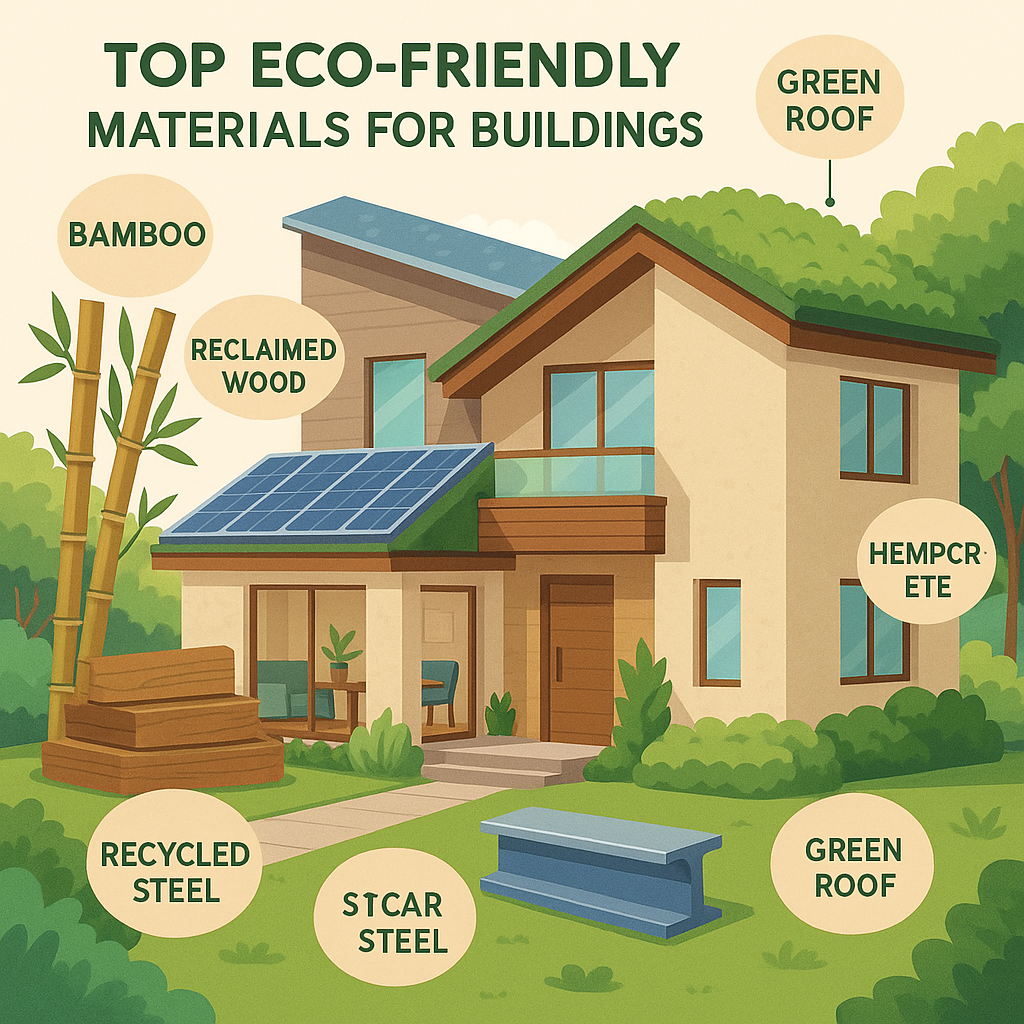Why Sustainable Building Materials Matter
People now better understand how building impacts our environment, so the need for eco-friendly materials keeps growing. Those who build and design structures opt for sustainable choices that are kinder to the planet and help create structures that save energy and last longer. Let’s look at some of the most common green materials used in building today—and why they’re important.
Bamboo: Nature’s Tough and Renewable Marvel
Bamboo isn’t just for making furniture or decorations—it’s also an amazing material for building. It grows super fast, up to three feet in a day sometimes, and you don’t need to plant it again after you cut it down. This makes it a great renewable option to use for floors, walls, and even for support structures in some places.
What Makes Bamboo Eco-Friendly?
- Grows back fast without replanting
- Tougher than many common woods
- Light and bendy
Recycled Steel: Giving Old Metal New Life
Recycled steel breathes new life into old metal instead of digging up fresh ore. Builders often use it for building frames, bridges, and support beams. It’s a top pick for green construction because you can reuse it over and over without it getting weaker.
Why Recycled Steel Is a Smart Pick:
- Cuts down on the need for new raw materials
- Lasts a long time and stays strong
- Keeps junk metal out of dumps
Cross-Laminated Timber (CLT): A New-Age Wood Option
CLT is created by sticking timber layers at 90-degree angles resulting in a tough and durable material for walls, roofs, and floors. It’s a cutting-edge engineered wood variant that’s becoming more common in eco-friendly construction.
Eco Benefits of CLT:
- Originates from sustainable resources
- Traps carbon present in wood
- Needs less energy to manufacture than steel or concrete
Reclaimed Wood: Old Wood, New Life
Rather than felling more trees reclaimed wood comes from older structures and finds new uses. It adds uniqueness to contemporary homes while also cutting down on waste.
Why Choose Reclaimed Wood?
- Prevents wood from ending up in landfills
- Lowers the need for cut trees
- Brings unique rustic appeal
Hempcrete: A Light and Eco-Friendly Insulator
Hempcrete is a natural building material that combines hemp plant fibers and lime. It allows air flow, weighs little, and insulates well. While it can’t support loads, it pairs with wooden frames.
Green Benefits of Hempcrete:
- Comes from quick-growing hemp
- Takes in carbon dioxide as time passes
- Resists pests and mold
Recycled Plastic: Turning Trash into Treasure
Plastic pollution poses a major challenge—but in construction recycled plastic now has an impact on the production of bricks, tiles, and insulation. These products show strength last long, and contribute to cleaning up the planet.
Reasons Recycled Plastic Helps the Environment:
- Cuts down plastic in landfills and oceans
- Stands up to weather and stays strong
- Can be used again and again
Cork: Natural, Grows Back, and Tough
Cork comes from cork oak tree bark, which grows back after harvest. People use it in floors and walls, and it works as a natural insulator.
Cork’s Green Benefits:
- Harvesting leaves the tree unharmed
- Grows back and breaks down
- Keeps out mold, bugs, and dampness
